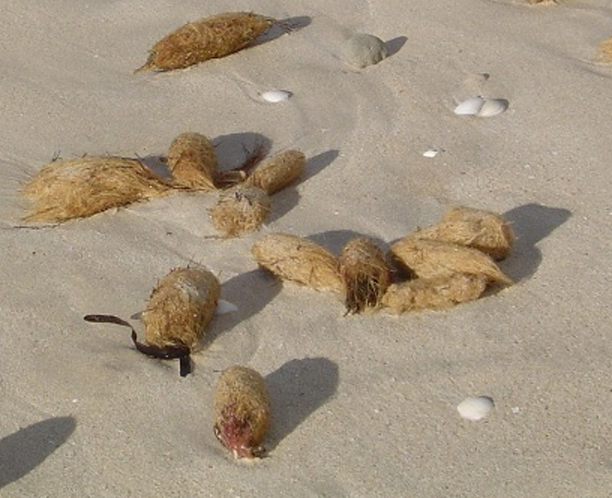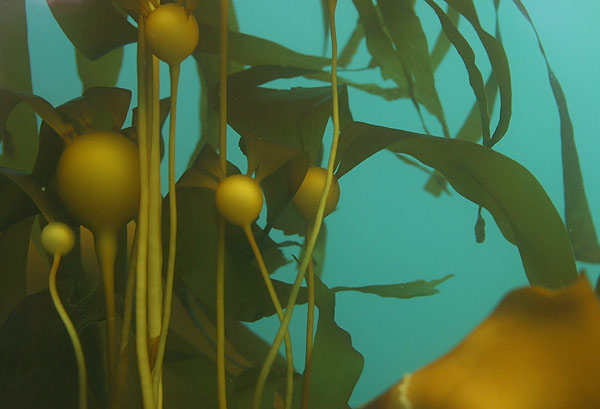Biology Forum › Botany Discussion › Seaweeds!
- AuthorPosts
- February 22, 2007 at 8:03 am #7000
 arianParticipant
arianParticipant - February 22, 2007 at 10:29 am #69294
 SororSaudadeParticipant
SororSaudadeParticipantcan you show a picture of those seaweeds?
- February 23, 2007 at 4:04 am #69349
 Dr.SteinParticipant
Dr.SteinParticipantIs it the one that can roll when the wind is blowing? Oops wait… I guess not. It is not a seaweed, it is a bush 😳
- February 23, 2007 at 5:26 am #69355
 VolvoxParticipant
VolvoxParticipantPlease post a picture of the seaweed that you are speaking of. I am currently taking a course on seaweeds, and have a background with them, as well as with algae.
- February 23, 2007 at 6:37 am #69356
 Dr.SteinParticipant
Dr.SteinParticipantIt is nice and mutual coincident! 🙂 I want to ask about Ulva (Chlorophyceae). I need data of its nutritive content. Could you do me a favour, please? Thank you in advance 🙂
- February 23, 2007 at 8:07 am #69361
 kjleParticipant
kjleParticipantAre you talking about Bull Kelp Nereocystis luetkeana ? These have large ball type structures on the ends of them. Just a guess really.

Edit: He posted the picture. This post is completely wrong now. Ignore it.
- February 23, 2007 at 8:41 am #69363
 arianParticipant
arianParticipantI am trying but i forgot how to attach a photo from my document
- February 23, 2007 at 8:53 am #69364
 arianParticipant
arianParticipantThe photo in on the top. I am not talking about Nereocystis sp
- February 23, 2007 at 1:45 pm #69375
 VolvoxParticipant
VolvoxParticipantI do not know. They look like clumps of dead grass. Good luck with this one.
As for Ulva, I do not know about its nutritional aspects. I would google that one if I were you.
- February 25, 2007 at 1:56 am #69427
 VolvoxParticipant
VolvoxParticipant@Dr. Stein… I found a link for you with some information that could be useful to you in relation to your question regarding Ulva.
http://www.mbari.org/staff/conn/botany/ … efault.htm
Otherwise, I have nothing for you. Hope this helps you out.
- February 25, 2007 at 2:50 pm #69441
- February 25, 2007 at 11:25 pm #69450
 daniel.kurzParticipant
daniel.kurzParticipantCan you tell me where the picture was taken? The sea around it is important because species are different depending on the region.
- February 26, 2007 at 8:25 am #69461
 arianParticipant
arianParticipantThe photo is taken from the webside. But it is very common and when is big wind and tough sea the shore is filled with this stuff.
- February 26, 2007 at 8:51 am #69463
 arianParticipant
arianParticipantthe address where this photo is taken is as follow:
- February 27, 2007 at 12:09 am #69495
 daniel.kurzParticipant
daniel.kurzParticipantI don’t recognize them but I can offer you this: They are formed by seaweed being ripped from the bottom of the sea shortly from the edge of the sea. In a location where the movement of the waves is moving in. In all likelihood they are made up of multiple different types of seaweed. One possible type that could be in that mess is:

I would recommend that if possible. Get a sample of the seaweed. Take it to a lab and stick it under a fairly high powered microscope. See what it looks like because that will help you. If you can get a picture of the microscopic view to show us. Here is a site that might help you.
- AuthorPosts
You must be logged in to reply to this topic.
No related posts.



